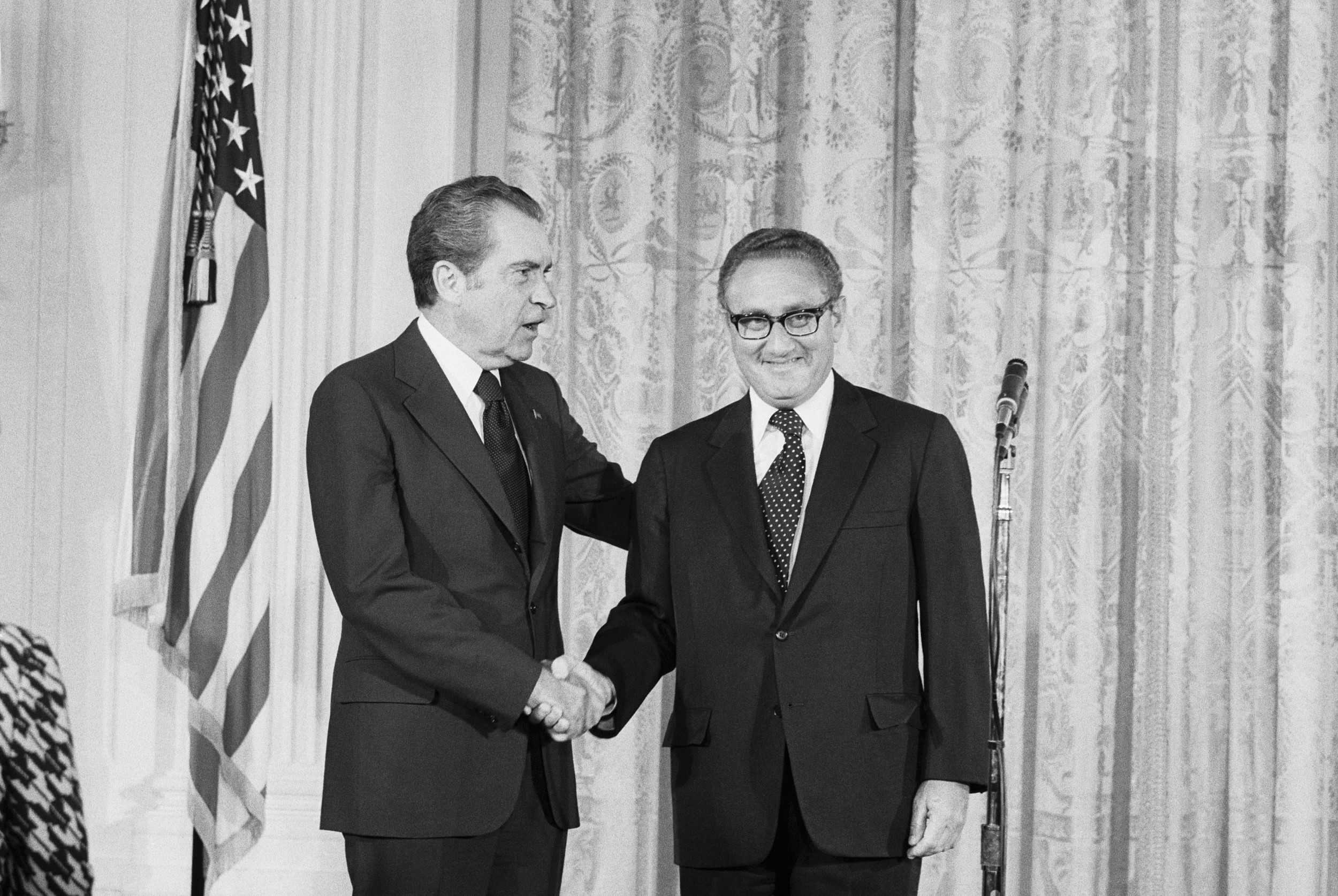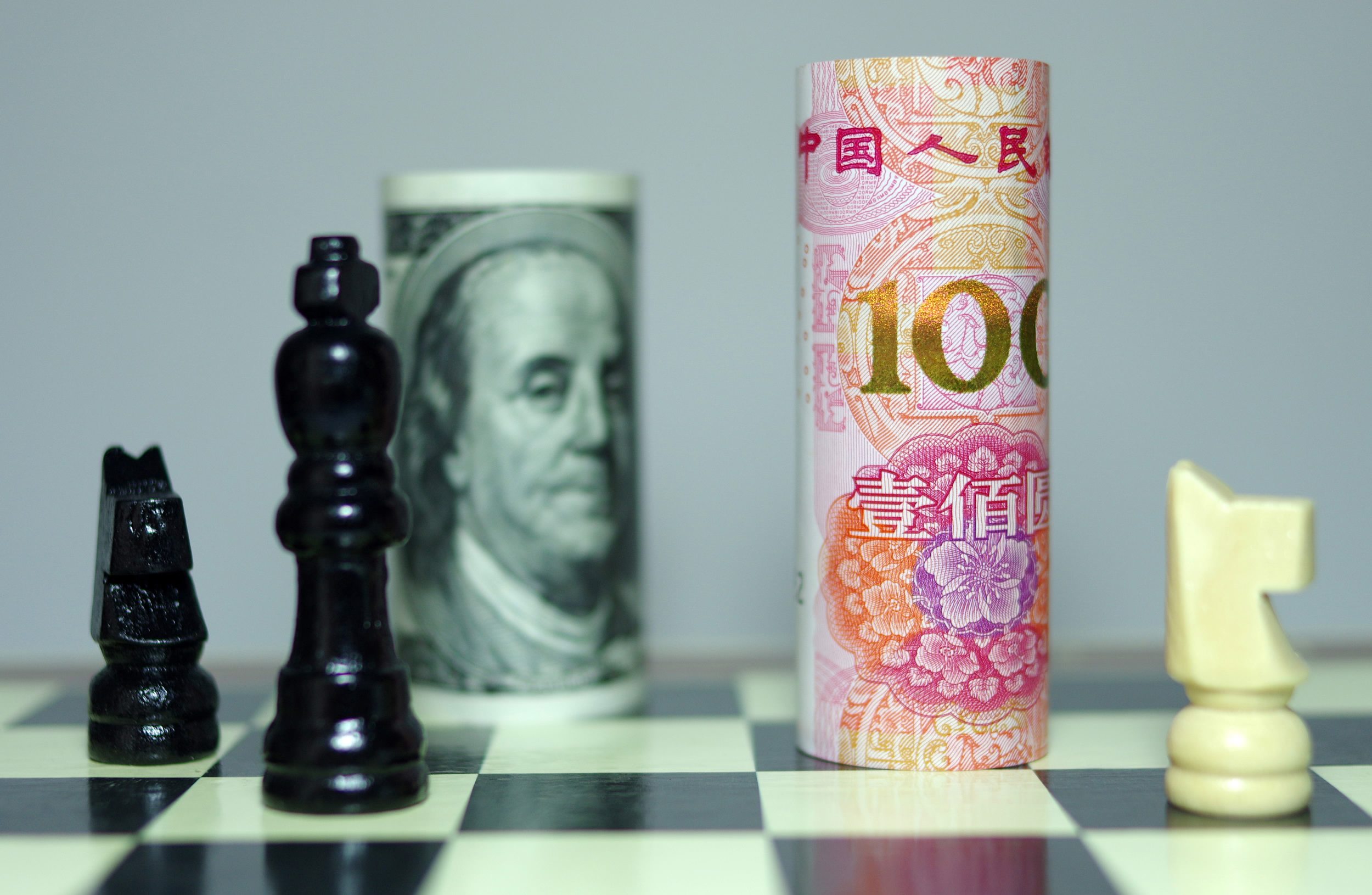
Business
18:28, 05-Nov-2017
Petroyuan will rise to challenge Petrodollar
CGTN

China is set to introduce a yuan-priced oil benchmark backed by gold in the coming months. As other countries have been tiptoeing away from their dependence on the US dollar, China’s move is a decisive step in creating a viable alternative to the "tyranny of the dollar" over world trade and finance.
Related story: China's involvement could tilt the global oil game on its axis
How petrodollar was set up in the early 1970s?
The mechanism underlying today's “dollar standard” is widely known and the term “petrodollar” describes it well. This system is based on an informal agreement set up by Henry Kissinger and Saudi princes in 1974 when confidence in the dollar was on shaky ground.

US President Richard Nixon congratulates Henry Kissinger after he was sworn in as secretary of state in a ceremony in the White House on Sept. 22, 1973. /VCG Photo
US President Richard Nixon congratulates Henry Kissinger after he was sworn in as secretary of state in a ceremony in the White House on Sept. 22, 1973. /VCG Photo
Due to the plummeting value of the dollar, the debt from the Vietnam War, and excessive domestic spending, President Nixon abruptly pulled out of the Bretton Woods Accord in 1971, which pegged the dollar to the price of gold and based the value of other currencies on that of the dollar. The ramifications of “Nixon Shock” rocked the global economic landscape and left the US bursting with debt and low on cash.
Confidence in the dollar began to crack. Saudi Arabia was receiving dollars for their oil shipments, but they could no longer convert the dollars to gold at a guaranteed price directly with the US Treasury. The Saudis were secretly dumping dollars and buying gold on the London market.
At the same time, as a result of the Organization of Petroleum Exporting Countries (OPEC) oil embargo and decision to institute dramatic production cuts that quadrupled the price of oil, the US plunged into a national energy crisis in the 1970s.
In 1974, President Nixon and Secretary of State Kissinger entered negotiations with the Saudi Royal Family. In the agreement, the United States would provide Saudi Arabia with arms and assist with the protection of oil fields. In exchange, Saudi Arabia was to price all oil sales in US dollars and invest surplus oil proceeds in US debt securities.

VCG Photo
VCG Photo
Behind this agreement, there was a not so subtle threat to invade Saudi Arabia and take the oil by force, according to top-secret documents declassified by the British government on January 1 2014.
By 1975, all oil-producing members of OPEC followed suit. Consequently, all other important commodities began to trade in dollars.
Petrodollars have since continuously flown back into the US economy, creating investment and economic growth that might not otherwise occur.
But after 43 years of unprovoked wars and geopolitical belligerence, US influence is beginning to fade.
Attempts to move away from the petrodollar system

VCG Photo
VCG Photo
There have been many attempts by various nations, especially within OPEC, to undermine the dollar's preeminence in recent decades.
Some were nipped in the bud by US interventions - such as the plan of Iraq's former dictator Saddam Hussein to sell oil for euros.
Others are less well known, but are indeed continuing to emerge below the surface.
A Kuwaiti finance firm suggested in 2014 that the Gulf Cooperation Council (GCC) could benefit from trading oil for bitcoin. The suggestion was based on the idea that the GCC could save time and money with faster, cheaper, and more efficient transactions.
This idea has been debated back and forth for some time, with some even suggesting that the “anonymity” factor could usher in a new era of world peace. The idea is that, using a neutral “petro-bitcoin,” countries would be immune to currency manipulation from governments, which has clear global impacts.
Another strong advocate of change is Russia, which suggested to China and Japan to purchase oil in yen or yuan.
Petroyuan: Beginning of the end of petrodollar

VCG Photo
VCG Photo
As the largest oil importer in the world, there is a great deal of logic in having oil contracts trade in yuan. But does China have a real chance to turn the petroyuan into a formidable force in the energy industry?
Now with Iran, Venezuela and Russia agreeing to trade oil in yuan, many believe that key to the success of the benchmark is convincing a country like Saudi Arabia to participate.
Saudi Arabia is one of the largest oil producers in the world, and sells a little more than 1 million barrels of oil each day to China.
Russia is still the top supplier to China, exporting 1.545 million barrels per day in September, and in fact, Russia has been taking market share away from Saudi Arabia in China. If Riyadh wants to avoid losing more ground, the thinking goes, it may need to agree to yuan-denominated sales.
"I believe that yuan pricing of oil is coming and as soon as the Saudis move to accept it - as the Chinese will compel them to do - then the rest of the oil market will move along with them,” Carl Weinberg, chief economist at High Frequency Economics, told CNBC.
It is reported that China’s large state-owned oil companies are considering an outright purchase of 5 percent of Saudi Aramco, a move that is being seen as a precursor to Saudi Arabia eventually breaking out of the US grip and trading of their oil in yuan.
Some see that as unlikely, as Saudi Arabia would likely face blowback from the US. But it would be a difficult choice for Riyadh – lose the Chinese market or spark the ire of Washington.
It may not happen right away, but the launching of the crude oil benchmark on the Shanghai exchange could mark the beginning of the end for the petrodollar.

SITEMAP
Copyright © 2018 CGTN. Beijing ICP prepared NO.16065310-3
Copyright © 2018 CGTN. Beijing ICP prepared NO.16065310-3